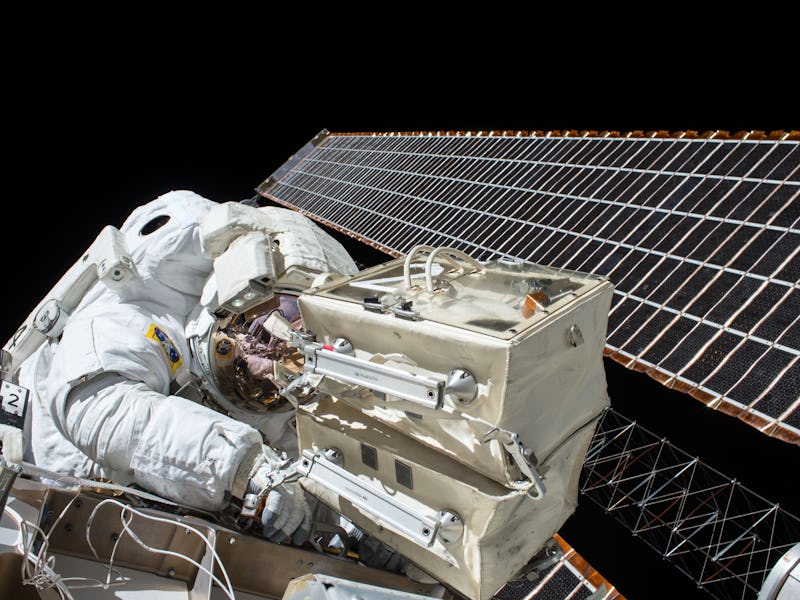ESA Designs Ultra-Thin Solar Cell That Will Power Its Future Satellites
Once built, these will revolutionize solar-powered space exploration.

Solar panels are as important in space as they are down here on Earth. The first spacecraft equipped with solar cells was launched into space in 1958, and since then probes, orbiters, and even the International Space Station use them to supply power for basic functionality.
But while solar energy has already enabled many long-term satellite missions, the European Space Agency has designed a solar cell that could revolutionize solar-powered space exploration. The agency shared the designs for a 0.1 millimeter (100 micrometers)-thick cell that is capable of converting 30 percent of the sunlight it absorbs into electricity — a benchmark known as efficiency. The ESA intends to use these to power their next-generation broadband-providing satellite, Neosat.
Currently, the most efficient commercially available solar panels have efficiency ratings as high as 22.5 percent, but a majority of them range from 15 to 17 percent efficiency, according to a 2018 EnergySage solar market report. If the ESA’s design functions as intended, it would effectively double the amount of energy that your average solar panel could produce.
0.1 mm-thick next generation solar cell for satellites can convert 30% of the sunlight it absorbs into electricity.
According to online solar energy information center PVEducation, the optimal thickness for solar cells is anywhere between 100 to 500 micrometers. This would mean the ESA’s design is extremely low mass compared to other cells, which were an average of 170 micrometers in a 2014 International Technology Roadmap for Photovoltaic infographic.
Increasing the energy produced by solar cells and decreasing their masses would not only help establish an ESA-run array of WiFi-providing satellites, but it would also enable solar-powered space exploration at larger distances from the sun that were ever thought possible. Combining these solar advances with durable batteries could perhaps lead to a fleet of self-sustained probes exploring the interworkings of our solar system.